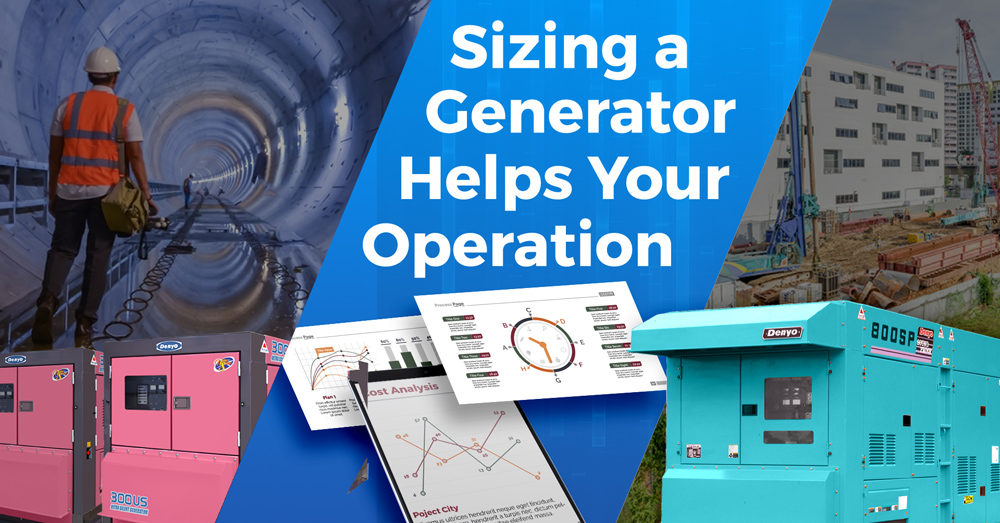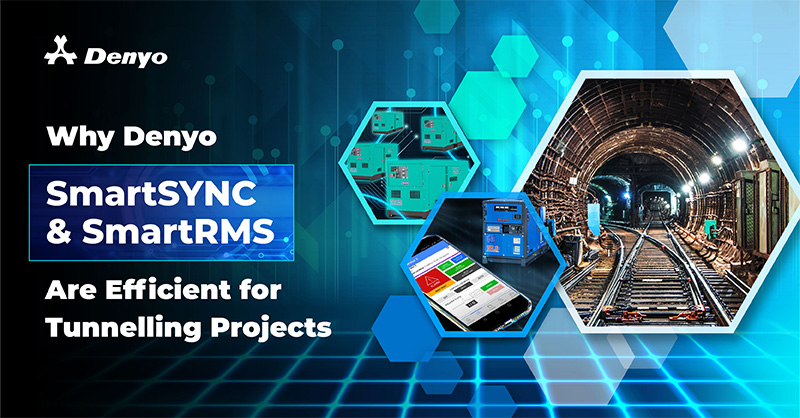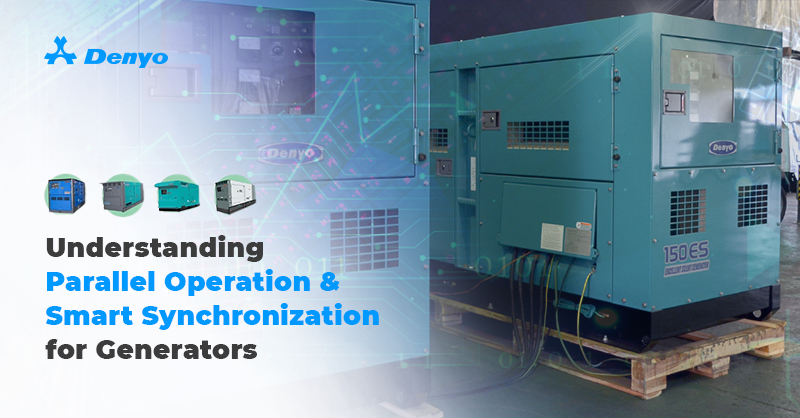Sizing a Generator Helps in Your Operations

As it goes for most things, size matters – even for generators. Estimating the generator size to manage all your power needs is one of the most critical stages in a project. Be it prime or standby power, a generator should not be rented or purchased without first knowing that it can efficiently meet your requirements. However, to size, a perfect generator for your project(s) can be complicated, which involves numerous factors and considerations.
The result of over or under sizing the generator for your project can end up costing you more than it should for rental fees and fuel. (Read more: Do you know… the Impact on Low-loading of Generator Set?) But fret not as we provide valuable insights and steps to help get you started.
Calculate your load size
Make a list of all of the items that you need to run. This should include not just your key-equipment, but also lighting and everything else that you need to get work done. Now note the starting and running wattage for each of your equipment; you can either find it on an information plate that should be affixed to every electrical device or in the device’s owner’s manual.
Conversions for electrical power
Make a list of all of the items that you need to run. This should include not just your key-equipment, but also lighting and everything else that you need to get work done. Now note the starting and running wattage for each of your equipment; you can either find it on an information plate that should be affixed to every electrical device or in the device’s owner’s manual.
Calculate your load size
You may often end up with your total power requirement in kW (kilowatt). kW is the actual power that will be used by the load to produce a useful working output. In order to convert the power requirement from kW to kVA (kilo-volt-amperes), in which how generators are rated, apply the formula below:
kW to kVA: kW ÷ Power Factor (E.g. 100kW ÷ 0.8 = 125kVA)
*A typical load Power Factor of 0.8 is used in this formula.
Define your running requirements
Now that you have a handle on the range of power ratings for your project, you should now determine which generators are on standby and which will be your primary power source.
As a guide, a generator used as a primary power source should be sized at 70% to 90% load, leaving a 10% to 30% safety margin for unexpected power requirements. The generator should not be operating at maximum capacity for long; doing so not only increases risks of damaging your generator and the equipment(s) connected to it but also create hazardous situations that can affect the progress of your project. Running loads at 70% to 90% continually could also improve fuel efficiency and help you minimise operation costs.
But with a need to consider for the type of the connected load(s) and its starting profile, it is common to see the selected generator’s capacity often unable to serve the actual load that it is intended to cater for; due to the wrong sizing of the generator. A detailed engineering study should always be carried out to verify the correct sizing before the actual deployment of the generator(s).
Analyse site conditions
While you have confirmed that your power requirements are sufficient, you need to ensure that the generators you are buying or renting are deployable, given the conditions and location of your site.
Site access and manoeuvrability have an impact on how the generator is delivered and deployed, which can also affect generator sizing. If access to the site is narrow, uphill or off-road, then generators with larger capacity are not recommended as transport will involve bigger and less manoeuvrable vehicles which may not be able to get on or off site. Similarly, if onsite space is limited, there may not be enough room to operate the crane and position the generator.
Work with a reliable partner
As this article demonstrates, there are numerous considerations to account for when selecting the appropriate generator for a project. As such, choosing your generator vendor and service provider is also a key consideration strictly not to be overlooked.
At Denyo, we do not just sell you generators; we talk to you and listen to your needs so that we can advise you with an optimally sized generator, as well as solutions to strive for zero power failure for your projects.
If you have any upcoming projects and are unsure of your power requirements, we welcome you to contact us for a non-obligatory discussion. to address your concerns.


